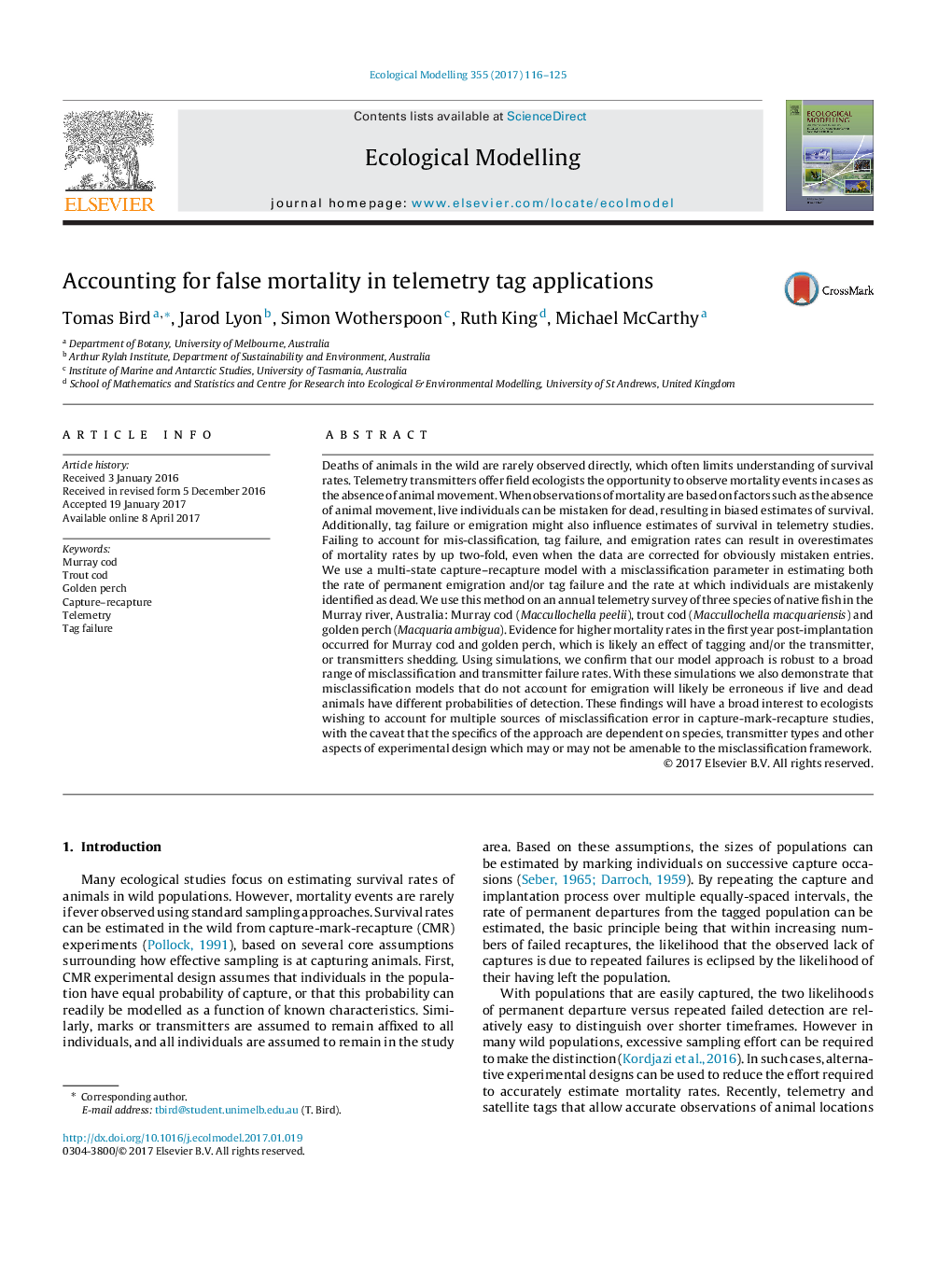| Article ID | Journal | Published Year | Pages | File Type |
|---|---|---|---|---|
| 5742113 | Ecological Modelling | 2017 | 10 Pages |
â¢Implanted telemetry tags with can be used to infer mortality events remotely.â¢Yet such tags can falsely misclassify lack of movement as mortality.â¢Our state-space model can be used account for such misclassification.â¢Mortality rates in wild fish were lower than expected when the model is applied.
Deaths of animals in the wild are rarely observed directly, which often limits understanding of survival rates. Telemetry transmitters offer field ecologists the opportunity to observe mortality events in cases as the absence of animal movement. When observations of mortality are based on factors such as the absence of animal movement, live individuals can be mistaken for dead, resulting in biased estimates of survival. Additionally, tag failure or emigration might also influence estimates of survival in telemetry studies. Failing to account for mis-classification, tag failure, and emigration rates can result in overestimates of mortality rates by up two-fold, even when the data are corrected for obviously mistaken entries. We use a multi-state capture-recapture model with a misclassification parameter in estimating both the rate of permanent emigration and/or tag failure and the rate at which individuals are mistakenly identified as dead. We use this method on an annual telemetry survey of three species of native fish in the Murray river, Australia: Murray cod (Maccullochella peelii), trout cod (Maccullochella macquariensis) and golden perch (Macquaria ambigua). Evidence for higher mortality rates in the first year post-implantation occurred for Murray cod and golden perch, which is likely an effect of tagging and/or the transmitter, or transmitters shedding. Using simulations, we confirm that our model approach is robust to a broad range of misclassification and transmitter failure rates. With these simulations we also demonstrate that misclassification models that do not account for emigration will likely be erroneous if live and dead animals have different probabilities of detection. These findings will have a broad interest to ecologists wishing to account for multiple sources of misclassification error in capture-mark-recapture studies, with the caveat that the specifics of the approach are dependent on species, transmitter types and other aspects of experimental design which may or may not be amenable to the misclassification framework.
